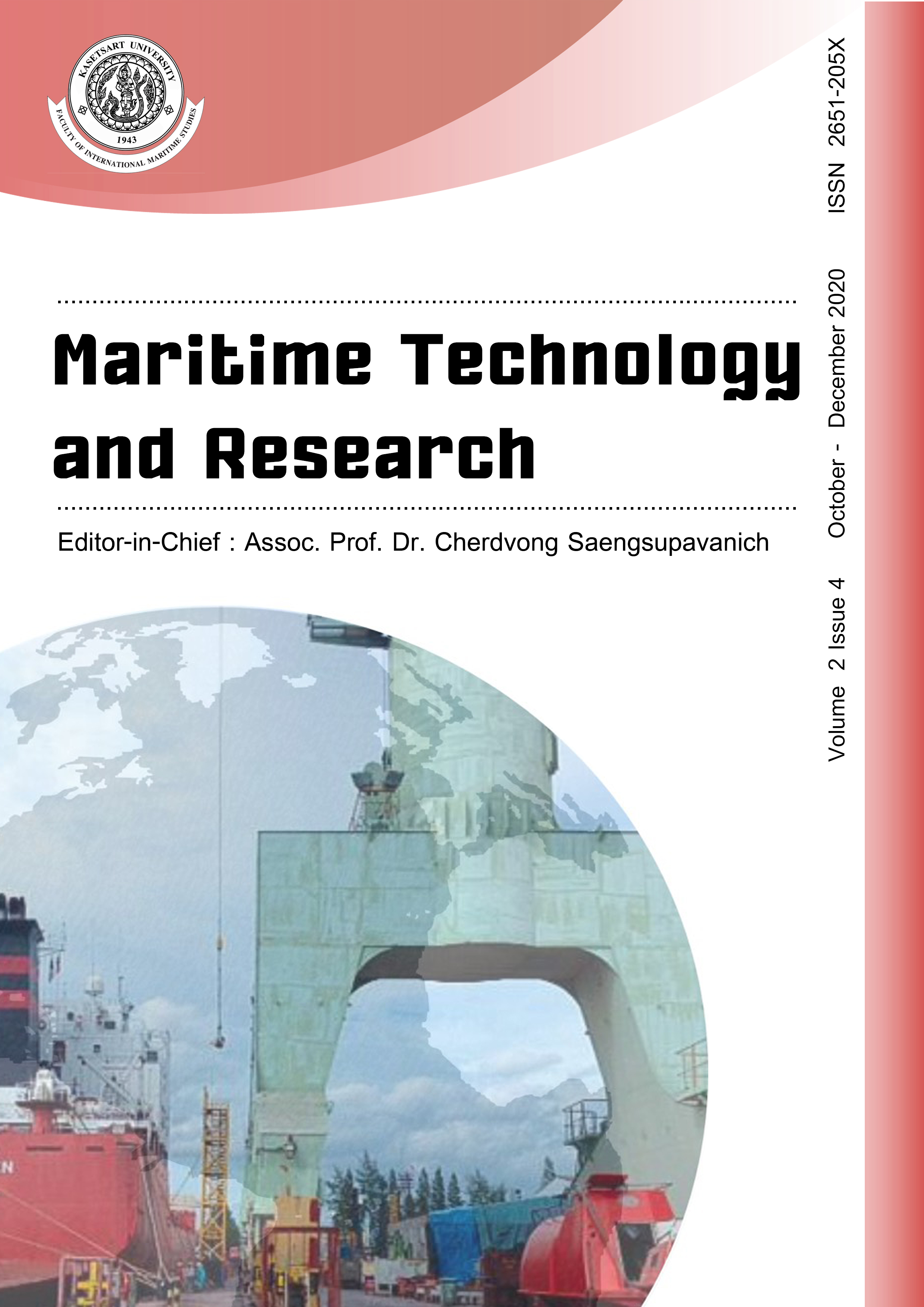The labor market of Chinese cruise seafarers: Demand, opportunities, and challenges
DOI:
https://doi.org/10.33175/mtr.2020.240324Keywords:
Chinese cruise seafarers, Demand, Labor marketAbstract
The rapid development of the Chinese cruise market has brought with it an urgent increase in demand for Chinese cruise seafarers. This brings great opportunities and challenges to the Chinese seafarer labor market. This research aims to contribute to this relatively under-studied area by calculating the demand for Chinese cruise seafarers and understanding the Chinese seafarer labor market from the aspects of training, recruitment, and their work experience on ships. In order to achieve these objectives, a demand model is constructed through the idea of market-driven, in-depth interviews using a detailed questionnaire. The study estimates that the total demand for Chinese cruise seafarers in 2030 will be 100,000. This reveals a predicted gap between demand and supply of 19,200 in 2020. The current source of seafarers is mainly from domestic shipping companies, hotels, and related institutions. Their entry age is relatively young, current job profiles are mostly those in the capacity of assistants, and the average wage is 1217 dollars. Thus, there is a lot of room for improvement with their increasing experience. The study has found that most seafarers are satisfied with the work on cruise ships and are more concerned about their career development rather than salary. English communication skills and practical skills are 2 important aspects of crew training. China's cruise ship labor market thus represents both a high aggregate demand and a lack of high-end experienced talent. Labor market policies and systems in China remain to be improved. Furthermore, in the context of COVID-19’s impact on the cruise industry, the study also analyzed the changes faced by the cruise industry and the seafarer market.
References
Cui, H. L. (2013). Analysis of professional international cruise crew talents requirement. Value Engineering, 29, 279-280.
Douglas, W. (2014). Berlitz: Cruising & cruise ships. Berlitz Travel: Twenty second edition, pp. 1-752.
Eben, D. (2020). Unfazed by coronavirus fears, cruise bookings are up for 2021. Retrieved from https://matadornetwork.com/read/unfazed-coronavirus-fears-cruise-bookings
Gibson, P. (2006). Cruise operations management. Elsevier Butterworth-Heinemann. doi:10.1016/B978-0-7506-7835-3.50006-6
Gibson, P., & Walters, C. (2012). Human resource management in the cruise industry. In: Vogel, M., Papathanassis, A., & Wolber, B. (Eds.). The business and management of ocean cruises. Oxfordshire, UK: CABI, pp. 101-155. doi:10.1079/9781845938451.0101
Grosbois, D. D. (2016). Cruise ship labor: Cruise line disclosure of employee well-being-related initiatives and performance. Tourism in Marine Environments, 11(2), 201-208. doi:10.3727/154427315X14513374773724
Hugo, M. (2020). Believe it or not, people are still booking cruises for next year. Los Angeles Times. Retrieved from https://news.yahoo.com/covid-19-made-cruises-look-120046016.html
Işik, D. A., & Ceri̇t, A. G. (2015). The role of internal marketing on creating service culture at service businesses: A case study from cruise tourism. Academic Review of Economics & Administrative Sciences, 8(2), 61-77.
Li, K. X., Yin J., Luo, M., & Wang, J. (2014). Leading factors in job satisfaction of Chinese seafarers. International Journal of Shipping and Transport Logistics, 6(6), 680-693. doi:10.1504/IJSTL.2014.064923
Lu, C., Weng, H., Huang, F., Leung, L., & Wang, W. (2018). Assessing the seafaring intention of maritime students in Hong Kong. Transportation Research Part A: Policy and Practice, 110, 258-273. doi:10.1016/j.tra.2017.10.007
Milde, P. C. (2011). The maritime labour convention 2006: An instrument to improve social responsibility in the cruise industry. Gabler Verlag, pp. 207-223. doi:10.1007/978-3-8349-6871-5_13
Papathanassis, A., Breitner, M., Schön, C., & Guhr, N. (2011). Cruise management: Information and decision support systems. Minerals & Metallurgical Processing, 31(1), 1-20. doi:10.1007/978-3-8349-7159-3
Post, D. (2019). Shipping line invests in new deep sea fleet. First Bulk Carrier Is on Order in China.
Qian, Y. C., & Wang, H. (2017). Annual report on China's cruise industry: 2016. Beijing: Social Sciences Academic Press.
Robbins, D. (2016). The business and management of ocean cruises. Tourism Management, 53, 122-124. doi:10.1016/j.tourman.2015.09.015
Shi, J., Ye, X., & Mei, J. (2018). The development and changes of cruise industry in China over the decade. In: Wang, H. (Ed.). Report on China’s Cruise Industry. Springer, Singapore, pp. 91-108. doi:10.1007/978-981-10-8165-1_4
Sun, X., Feng, X., & Gauri, D. K. (2014). The cruise industry in China: Efforts, progress and challenges. International Journal of Hospitality Management, 42, 71-84. doi:10.1016/j.ijhm.2014.05.009
Tai, S. K. (2016). Review of the development of seafarers in Hong Kong. Maritime Business Review, 1(2), 149-162. doi:10.1108/MABR-05-2016-0010
Veronica, P., Silvia, M., & Ramona, B. N. (2014). Ongoing trends and challenges in the cruise tourism industry the Black Sea Region as an emerging cruise destination. Ovidius University Annals: Economic Sciences Series, 14(2), 29-34.
Vogel, M., & Oschmann, C. (2012). The demand for ocean cruises - three perspectives. In: Vogel, M., Papathanassis, A., & Wolber, B. (Eds.). The business and management of ocean cruises. Oxfordshire, UK: CABI, pp. 3-18. doi:10.1079/9781845938451.0003
Yang, L. (2016). Research on the cooperative education mode of college enterprise "double subject" in international cruise crew management. Journal of Jiamusi Vocational Institute, 10, 121.
Zheng, Y. X., Qun, Y. U., Hairong, Z., & University, S. M. (2018). Strategy research of marine cruise tourism development in shanghai. Ocean Development and Management, 1, 34-38.
Downloads
Published
Issue
Section
License
Copyright: CC BY-NC-ND 4.0








